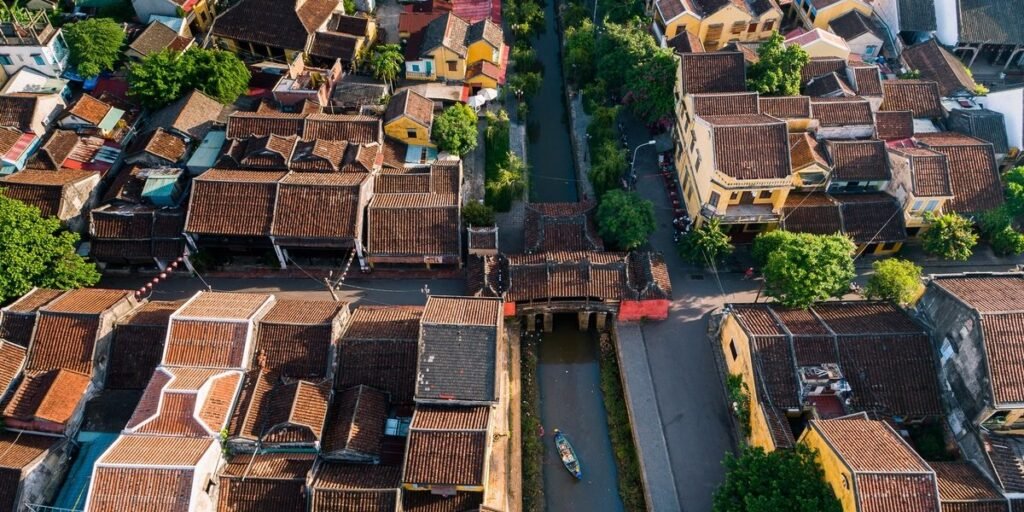In the dynamic landscape of Southeast Asia investments, Vietnam is stealing the spotlight with a foreign direct investment (FDI) frenzy that’s nothing short of spectacular. As of the first half of 2025, the country has raked in over US$21.5 billion in FDI registrations—a jaw-dropping 32.6% year-on-year increase, marking the highest growth rate since 2009. For investors eyeing opportunities in Vietnam’s manufacturing hubs, high-tech sectors, and renewable energy projects, this surge signals a golden era of economic momentum. But what’s driving this FDI boom in Vietnam, and how can savvy dealmakers position themselves for the long haul?
At DealFlow.sg, we’re all about connecting you to the pulse of Southeast Asia’s deal flow. Whether you’re scouting for Vietnam FDI opportunities or analyzing global supply chain shifts, this deep dive unpacks the numbers, the players, and the policies propelling Vietnam toward its ambitious US$150-200 billion FDI target by year-end. Buckle up—this is the story of a nation on the rise.
The Numbers Behind Vietnam’s FDI Explosion: Record-Breaking Growth in H1 2025
Let’s start with the stats that have investors buzzing. According to Vietnam’s Ministry of Planning and Investment, FDI inflows hit US$21.5 billion from January to June 2025, up from US$16.2 billion in the same period last year. This isn’t just incremental growth; it’s a 32.6% leap that outpaces regional peers like Thailand and Indonesia, solidifying Vietnam’s status as a top FDI destination in Southeast Asia.
Breaking it down further:
- New Projects and Expansions: Over 1,200 new FDI projects were greenlit, alongside expansions in existing ventures, injecting fresh capital into the economy.
- Disbursed Capital: Actual FDI utilization reached US$12.4 billion, a 7.2% increase, ensuring these investments translate into real jobs and infrastructure.
- Sector Spotlight: Manufacturing led with 68% of inflows (US$14.6 billion), followed by real estate (US$2.1 billion) and renewables (US$1.8 billion).
This FDI surge in Vietnam 2025 reflects a broader trend: post-pandemic recovery fused with geopolitical realignments. As companies diversify away from China amid U.S.-China trade tensions, Vietnam’s low-cost labor, strategic ports, and WTO membership make it an irresistible pivot point. For Southeast Asia investments, it’s a reminder that Vietnam isn’t just competing—it’s leading the pack.
If you’re tracking Vietnam FDI trends, keep an eye on Hanoi’s northern economic zones and Ho Chi Minh City’s southern tech clusters. These hotspots are where the action is, drawing billions in commitments that promise multiplier effects across the region.
Power Players Pouring Billions: Spotlight on SYRE, Trump Organization, and Beyond
What’s fueling this investor confidence? Landmark deals from global heavyweights. Take Sweden’s SYRE, a sustainable materials innovator, which announced a US$1.2 billion investment in a green manufacturing facility in Binh Duong province. This project, focused on eco-friendly textiles and composites, aligns perfectly with Vietnam’s push for circular economy initiatives and could create 5,000 jobs by 2027.
Then there’s the Trump Organization, making waves with a US$500 million luxury resort development in Phu Quoc Island. Slated for completion in 2028, this venture taps into Vietnam’s booming tourism sector, projected to hit US$30 billion annually by 2030. It’s a bold bet on hospitality FDI in Vietnam, blending high-end branding with local partnerships to navigate regulatory hurdles.
These aren’t isolated wins. Intel’s ongoing US$1.5 billion chip assembly plant in Ho Chi Minh City expanded in Q2 2025, while Samsung pledged an additional US$3 billion for display tech R&D in Bac Ninh. Even renewable energy giants like Denmark’s Ørsted are committing US$800 million to offshore wind farms off the central coast, capitalizing on Vietnam’s 3,200 km coastline for green FDI opportunities.
For deal flow enthusiasts at DealFlow.sg, these moves underscore Vietnam’s integration into global supply chains. Semiconductors alone could attract US$20 billion in FDI by 2030, per government estimates, positioning Vietnam as Asia’s next silicon hub. If you’re hunting Vietnam investment deals, platforms like ours can connect you to vetted opportunities in these high-growth sectors.
Government Game-Changers: Policies Paving the Way for Sustained FDI Growth
Vietnam’s FDI success isn’t accidental—it’s engineered. The government’s National FDI Strategy 2021-2030 has been turbocharged in 2025, with reforms that slash red tape and supercharge infrastructure. Key highlights include:
- Business Environment Upgrades: The World Bank’s Ease of Doing Business ranking jumped to 70th globally, thanks to digital permitting and one-stop FDI approval portals.
- Infrastructure Blitz: US$15 billion in public-private partnerships (PPPs) for highways, airports, and 5G rollout, including the North-South Expressway completion by late 2025.
- High-Tech Focus: Tax incentives for semiconductors (0% corporate tax for 15 years) and renewables (import duty exemptions on solar panels) are magnets for FDI in emerging industries.
Prime Minister Pham Minh Chinh’s administration has set a moonshot: US$150-200 billion in total FDI for 2025, building on 2024’s US$36.6 billion haul. Amid global headwinds like inflation and supply disruptions, these policies provide a buffer, making Vietnam a resilient bet for Southeast Asia investments.
Critics point to challenges—land acquisition delays and skilled labor shortages—but proactive measures like vocational training hubs in Da Nang are addressing them head-on. For investors, it’s a green light: Vietnam’s FDI ecosystem is maturing fast, with EVFTA and CPTPP trade pacts opening doors to European and Pacific markets.
Vietnam’s Evolving Market: Predictions and the Road Ahead for Foreign Investments
Peering into 2026 and beyond, what’s next for Vietnam’s FDI trajectory? Experts at DealFlow.sg forecast a 15-20% annual growth through 2030, driven by EV battery plants and AI data centers. With U.S. tariffs on China lingering, more multinationals could shift US$50 billion in manufacturing FDI to Vietnam, per McKinsey projections.
Yet, risks loom: Climate vulnerabilities could hike insurance costs for coastal projects, while U.S. election outcomes might tweak trade flows. On the flip side, Vietnam’s young demographic (median age 32) and urbanization rate (40% by 2030) spell endless opportunities in consumer goods and fintech.
How will foreign investments shape Vietnam’s future? They’re already catalyzing a middle-class boom, lifting GDP growth to 7.5% in 2025. But sustainable FDI—think green tech over polluting factories—will define whether Vietnam leaps to upper-middle-income status by 2045.
At DealFlow.sg, we see this as a call to action for investors. Dive into our database for Vietnam FDI deals, from seed-stage renewables to mega-manufacturing JVs. What are your predictions for Vietnam’s evolving market? Will semiconductors eclipse tourism as the FDI kingpin? Share your takes in the comments below—let’s spark the conversation on Southeast Asia’s hottest investment frontier.




